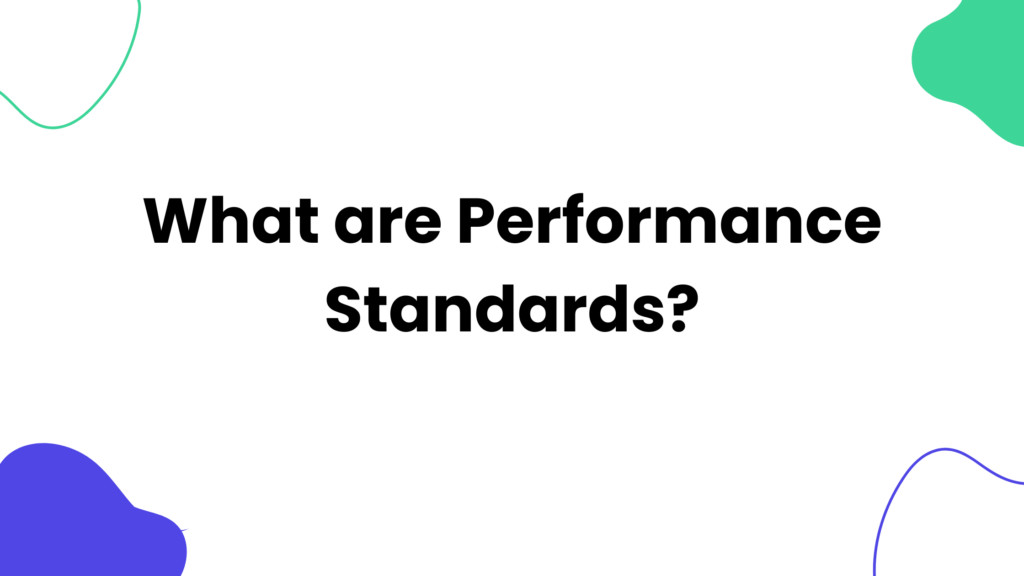Every employee knows their job description, but the performance standard makes them realize how well they must do them. Apart from the job description, the company also sets performance standards, which the employees follow. Performance standards help in work completion and also the maintenance of quality. This article will cover all the basics of performance standards.
- What are performance standards?
- How to design performance standards?
- What are the basic levels of performance?
- Conclusion
What are performance standards?
The job description varies from job to job. Every job has different demands, skills, and education levels. The company sets the criteria for any job. The ones who fulfill the requirements get the job. The job description only identifies the work type and responsibilities. Whereas the performance standards help the company in ensuring quality work. The performance standards are performance objectives that come with a performance improvement plan.
Performance standard tells an employee how to go about the work and what the set expectations of a company are for any employee. The standards depend on the type of job nature and job description. Performance standards need to be clear and concise. The employees need more clarity on the performance standards.
A dispute has different job descriptions and performance standards as per the job; there are some basics guidelines for setting performance standards:
- Easy to understand
- Easy to implement
- Relevant to the specific job
- Easily measurable
- Easily achievable
- Realistic
- Specific
Performance standards help set expectations for the employees, who know what to do and how to do it. If an employee cannot go by the rules of performance standards, then you can help that employee improve by conducting meetings, workshops, or training. This way, the employee will learn and strive to reach and fulfill the company’s performance standards.
How to design performance standards?
It is better to design and finalize the performance standards with your employees. Sometimes, the leaders set unrealistic performance standards because they need to gain more knowledge of the groundwork. Therefore, the employees can help design the performance standards in many ways. Employees also offer unique ideas and insights into the standard-setting meeting. Here are a few of the tips to creatively design your own performance standards:
Reviewing your Guidelines
Performance standards are for all employees. They are not specific to any individual. Therefore, they should apply to everyone. The employees should get a clear idea by reading the performance standards.
Identifications of Important Tasks
You should focus on tasks, responsibilities, and goals. Everything should be predefined and self-explanatory. The performance standards should all gather to work towards the end goal.
Determining the Success Criteria
This is one of the essential aspects of setting performance standards. The success criteria need to be clearly identified so everyone knows what they have to achieve. Some companies focus more on accuracy, while others focus on customer satisfaction. Some work more on marketing, and some on quality rather than quantity. So, it is essential to set the success criteria for the employees.
Written Form
People forget the points quickly. Just talking to your employees about your performance standards won’t help you in any way. It is better to get them written down all the points to make sure everyone follows them. You can also create a separate checklist for each employee, which reminds them to work per the company’s performance standards.
What are the basic levels of performance?
Performance standards can be set for the whole company or even a single department. It emphasizes the betterment of employees and sets a yardstick for quality work. Basically, there are three levels of performance:
Strategic Performance Management
This level is set to achieve the organizational goals. It is the highest among other performance levels because it sets the general goals for company growth. For this level, the company strives to answer the following questions:
- Do we have a strategy to achieve our set goals?
- Is the strategy working for our company?
- Are we able to bring the expected results?
Operational Performance Management
The basic goal of this performance management is to set operational goals. This level focuses entirely on the process within a company, such as specific activities or projects. The primary goal is to check whether the current strategy works for the particular project. For this level, the company strives to answer the following questions:
- Is every department performing its duties?
- Are organizational strategies linked with operational activities?
- Are our project strategies producing any results, or do we need to change them?
Individual Performance Management
This is the lowest level which focuses on an individual. The company focuses on the performance of each employee individually. This level starts with setting work goals and standards by reviewing the employee’s performance and ability to learn and work effectively. For this level, the company strives to answer the following questions:
- How are the employees working?
- Are they trying to improve their working standard?
- Are they working towards the betterment of the company?
CONCLUSION
Performance standards should be flexible and soft enough. You want to ensure that the employees’ standards are achievable. Performance standards have many benefits, but you need to create a balance for your employees. Your performance standards need to be motivational and achievable for the employees so they find it encouraging to reach them.
Related Articles:

